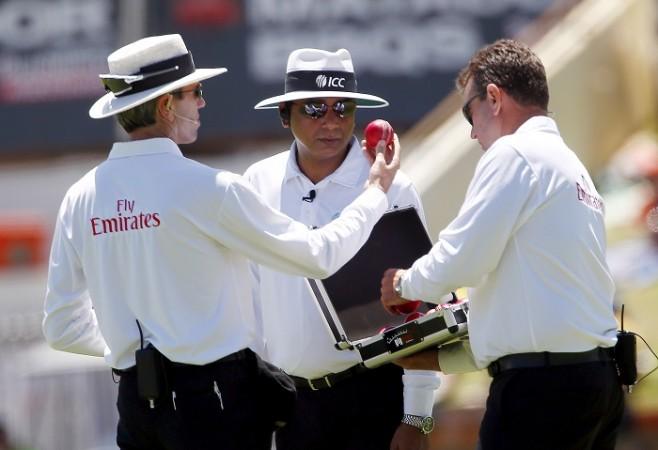
The Marylebone Cricket Club has announced that there will be a number of new laws added to the game with effect from October 1, 2017, with the most notable being that a player can be sent off for misconduct and a restriction on bat size.
Also read: International cricket to return to Pakistan
The main reason the MCC decided to add the sending-off rule -- a bit like the red card in football -- is to eliminate poor on-field behavior at the lower levels of the game. There will be four levels of offences. The most serious, levels three and four, include temporarily or permanently removing a player from the game alongside a five-run penalty.
Level 1
Offences include excessive appealing and showing dissent at an umpire's decision. Following an official warning, a second Level 1 offence will result in five penalty runs being awarded to the opposing team.
Level 2
Offences (including throwing the ball at a player or making deliberate physical contact with an opponent during play), will result in the immediate awarding of five penalty runs to the opposing team.
Level 3
Offences (including intimidating an umpire or threatening to assault another player, team official or spectator) will result in five penalty runs and a removal of the offending player from the field for a set number of overs, depending on the format of the match.
Level 4
Offences (threatening an umpire or committing any act of violence on the field of play), will result in five penalty runs and the removal of the offending player for the remainder of the match. If the player is batting at the time of the offence, he/she will be recorded as 'retired out'.
"We felt the time had come to introduce sanctions for poor player behavior and research told us that a growing number of umpires at grass roots level were leaving the game because of it. Hopefully these sanctions will give them more confidence to handle disciplinary issues efficiently, whilst providing a deterrent to the players" John Stephenson, the MCC's head of cricket, said.
The MCC have also made a restriction on the size of the bat in a bid to "redress the balance between bat and ball". A bat gauge will be used to make sure the new limits are enforced in professional matches. However, cricketers in amateur matches will be allowed to continue wielding their existing blades that are in breach of the new rules. The new maximum permitted dimensions of a cricket bat will be 108mm in width, 67mm in depth with 40mm edges.
Apart from these two rules, the MCC has also announced a change in the 'bouncing bat' run outs to protect the batsmen. The rule states that once a batsman crosses the crease, and if the forward momentum results in the willow losing contact with the safe territory when the wicket is put down, the batsman will not be run out.
There has also been a change to the Mankad rule in a bid to make the non-strikers more vigilant when backing-up. The new change states that if a non-striker is out of their crease "from the moment the ball comes into play to the instant when the bowler would normally have been expected to release the ball", the bowler will be within their rights to run them out.














